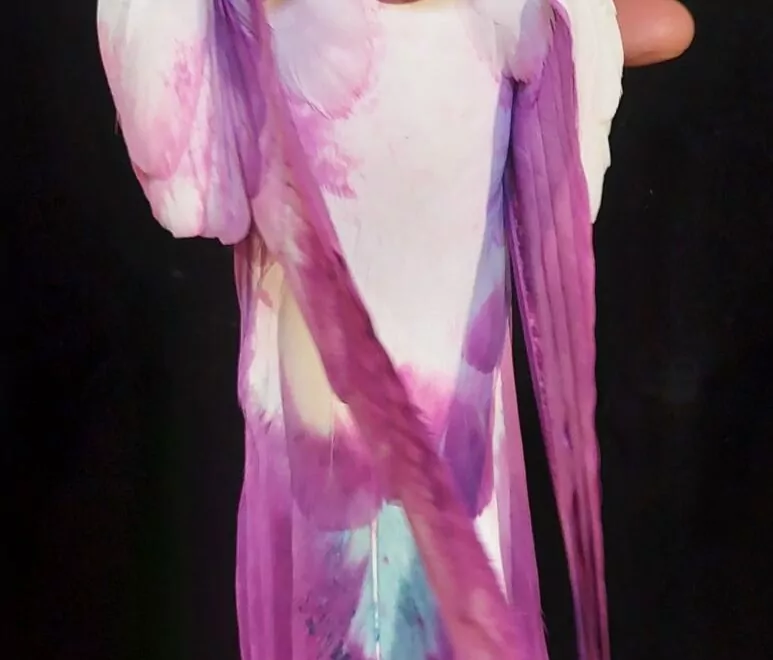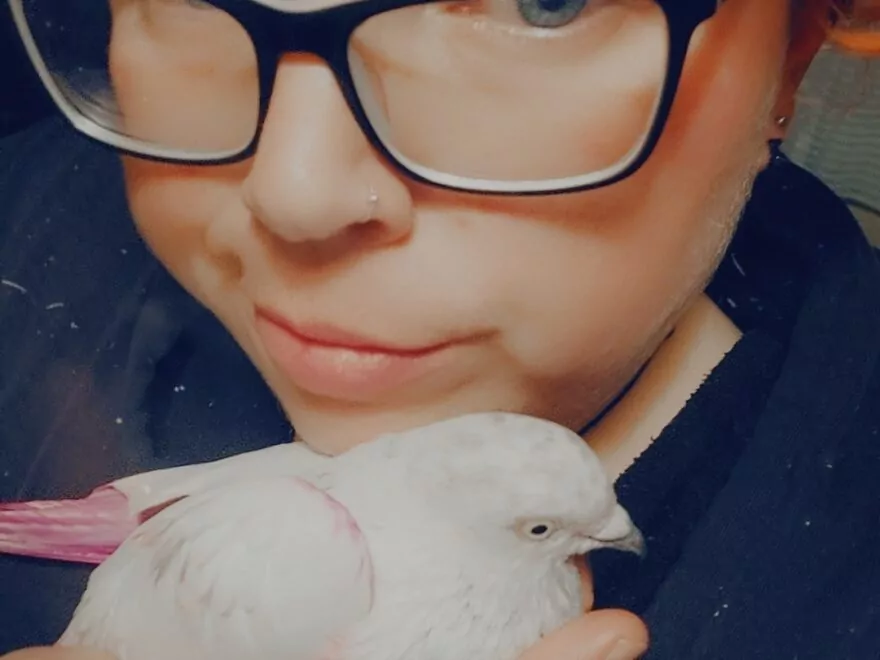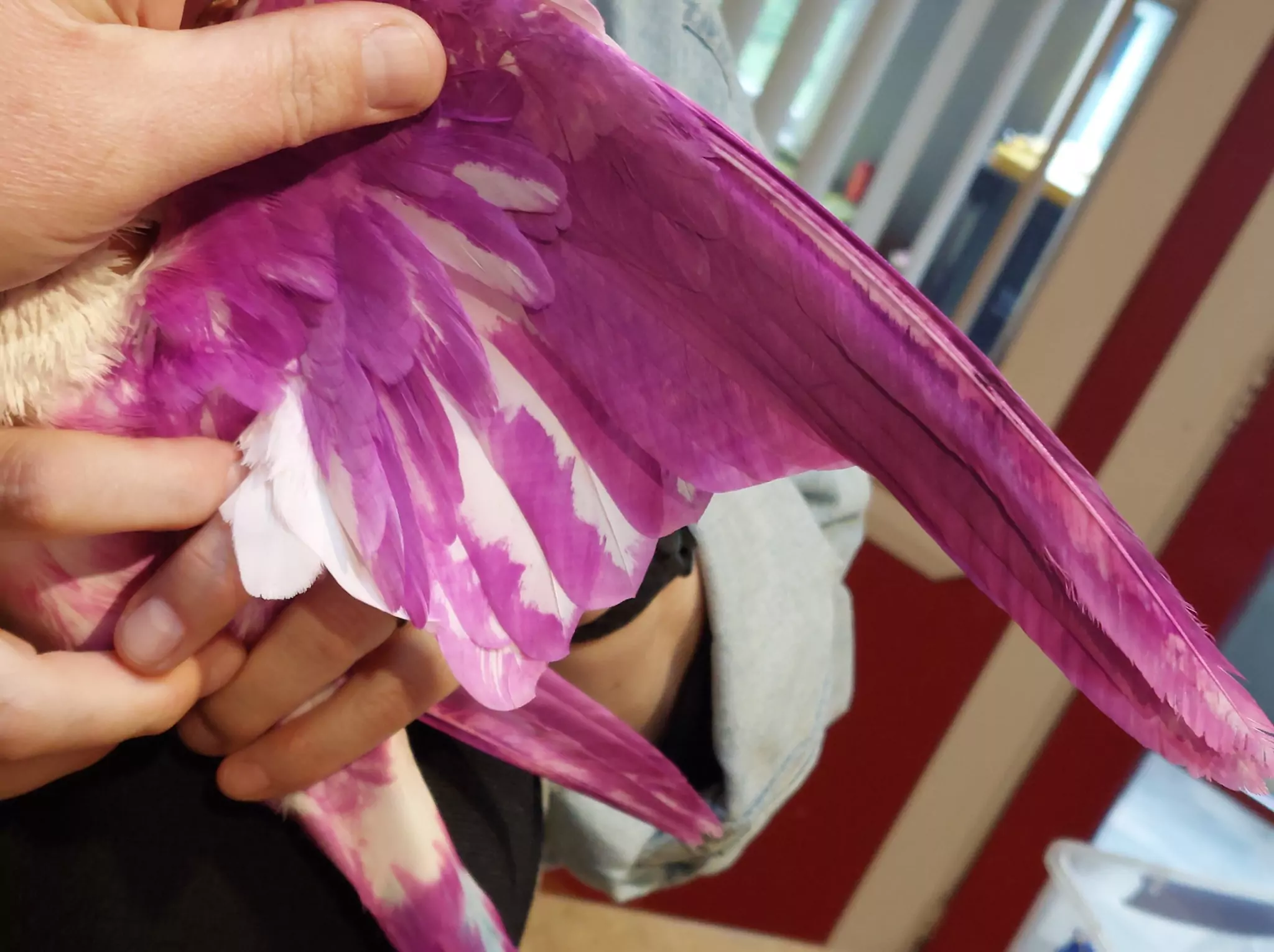A pigeon believed to have been dyed for a gender reveal party, is now recovering in the care of a South Canterbury bird rescuer after being found injured and severely underweight in Ashburton.
The bird was discovered by a local vet and later taken in by Zena from South Canterbury Bird Rescue, who says the pigeon is in poor condition, suffering from a broken wing and early signs of organ failure.

The animal is thought to have been released into the wild after being used in a celebration, a trend animal advocates warn is dangerous and cruel.
Bright green droppings, a clear sign of early organ failure, and significant weight loss were among the health concerns flagged by the vet.
“She is now so skinny that she’s in the early stages of organ failure,” Zena said. “And she was caught by a cat after being released.”

Speaking with Chris Lynch Media, Zena explained that she drove from Timaru to Ashburton to collect the bird after seeing a post online.
“The bird is unable to fly, has been checked over by a vet, and has a broken wing and is very underweight,” she said.
“It’s a domesticated pigeon, who knows what happened, but it’s most likely someone caught it, dyed the feathers for a gender reveal party, and then released it, where it ended up being attacked by a cat.
“This is the first time something like this has happened in my 11 years of doing this.”
The bird is now on painkillers, antibiotics, and a feeding regimen, but due to her size and condition, surgery isn’t an option.
She’s on up to six weeks of cage rest, Zena said.
“Birds are not for using at gender reveals. How anyone could think this is OK is beyond me.”
SPCA Scientific Officer Christine Sumner told Chris Lynch Media the SPCA does not recommend dying of an animal’s feathers, fur, or skin.
“There is a risk that the chemicals used for colouring the animal can harm their skin or eyes, or digestive tract if ingested when the animal grooms, she said.
“Some chemicals used for colouring may irritate the animal’s airways when they breathe them in.
“We also do not recommend the use of ‘pet-friendly’ dyes, as this may indirectly promote others to dye animals with products that are not safe for animals. It could be considered an ill treatment offence depending on the circumstances and the dye used.
The SPCA encourages anyone with further information on this matter to report it through their website or 0800 SPCA NZ.









